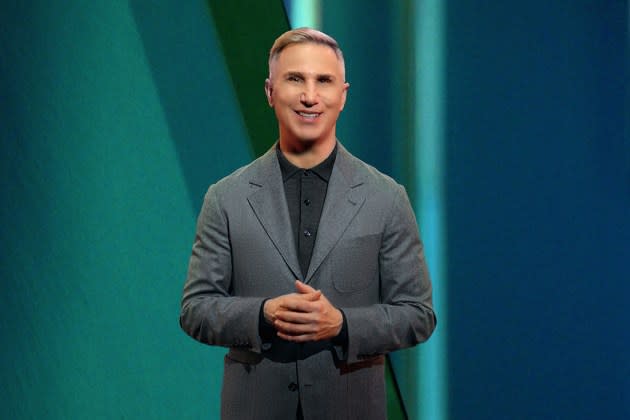A+E Networks Unleashes Upfront Tidal Wave of Content as It Contends With “New Economics” of TV

When it comes to the entertainment business, sometimes you have to zig if everyone else is zagging. For A+E Networks, the owner of brands like A&E, History, and Lifetime, that means leaning into what it knows: Unscripted TV, and banking that its strategy of sticking with linear TV while exploring other avenues for reach and revenue is the key to surviving a tumultuous moment in media.
“I actually think we feel we’re in a pretty good position versus the broader marketplace,” says Peter Olsen, A+E Networks’ president of ad sales, in an interview. “We are still able to produce 2,000-plus hours of content on a budget that is smaller than a few years ago because of the economics of the industry. But our programming and creative teams have figured out a way to know what works for us and our audiences that’s affordable and profitable in the new economics of the quote-unquote television industry.”
More from The Hollywood Reporter
The result is an upfront slate — announced Wednesday, that includes some 2,500 hours of content, including production and programming deals with boldface names like Tom Hanks, Barack Obama, Reese Witherspoon, Robin Roberts, LeBron James, Derek Jeter and more.
“A+E continues to move forward with intention and pace in the ever-evolving media landscape, bringing forth premium quality content for viewers and innovative solutions for advertising partners. Behind the scenes, we partner with the best talent in the business – in front of and behind the camera – resulting in a diverse roster that resonates emotionally with all audiences everywhere,” said A+E Networks CEO Paul Buccieri. “We are creators of content that inspires, captivates, delights and informs, and it is the power of imagination and storytelling that binds us all, no matter how or where we choose to watch.”
Among the shows in the works are a 20-part World War II doc hosted by Hanks, and a lifestyle content deal with Witherspoon’s Hello Sunshine.
“There’s still a lot of clients in a part of the marketplace that still wants that high quality talent, piece of it, the environment matters, all that stuff,” Olsen says. “So I think it’s it probably doesn’t matter as much as it did 10 years ago where we really lead with shows, stars, and brands, I think we lead now with audience and tools. But realizing that that quantity of content and the quality of talent matters still it puts us above some other people.”
The company still programs its cable channels, of course, but also offers a variety of free, ad-supported streaming channels with library fare. And of course programming from the company has become a ubiquitous presence in the libraries of other streaming services as well, with A+E seeking ownership of the content it produces to it can more effectively monetize it.
And it continues to release new ad tools, rolling out a new offering called “InterAction” at its upfront presentation Wednesday, combining data from Tvision, EDO and Brand Effect to gauge the reach and efficacy of its advertising.
“When we walk into a room with these buyers and clients, and we start talking about tools like InterAction … where we’re able to guarantee against a business outcome measurement that matters most to them, their eyes light up, because it’s solving for a problem in the market,” says Roseanne Montenes, senior VP of ad sales-audience solutions. “That has been a bit of a challenge for a very, very long time.”
Olsen says that it’s a strategy that has resonated with advertisers, despite larger issues in the market.
“We’re able to talk language marketers really care about which is we’re a content producer, we reach a lot of people and we’re willing to guarantee you the stuff that matters most to you, which is driving your business,” Olsen says. “So you couple the robust content pipeline with our dispersed distribution approach we’ve taken over the last five years, and we still reach two thirds of the country across our multi platform approach.”
The fundamentals of TV advertising may remain challenged, but the company is betting that it has a sustainable path forward.
“We are still a very profitable boutique media company, because we don’t pretend to be something we aren’t,” Olsen says. “We focus on the customer and the client and we don’t kid ourselves… we win some Emmys, but we’re not we’re not we’re not seeking the glory, so to speak. We’re more of a under-the-radar content machine that is working.”
Best of The Hollywood Reporter

 Yahoo News
Yahoo News 